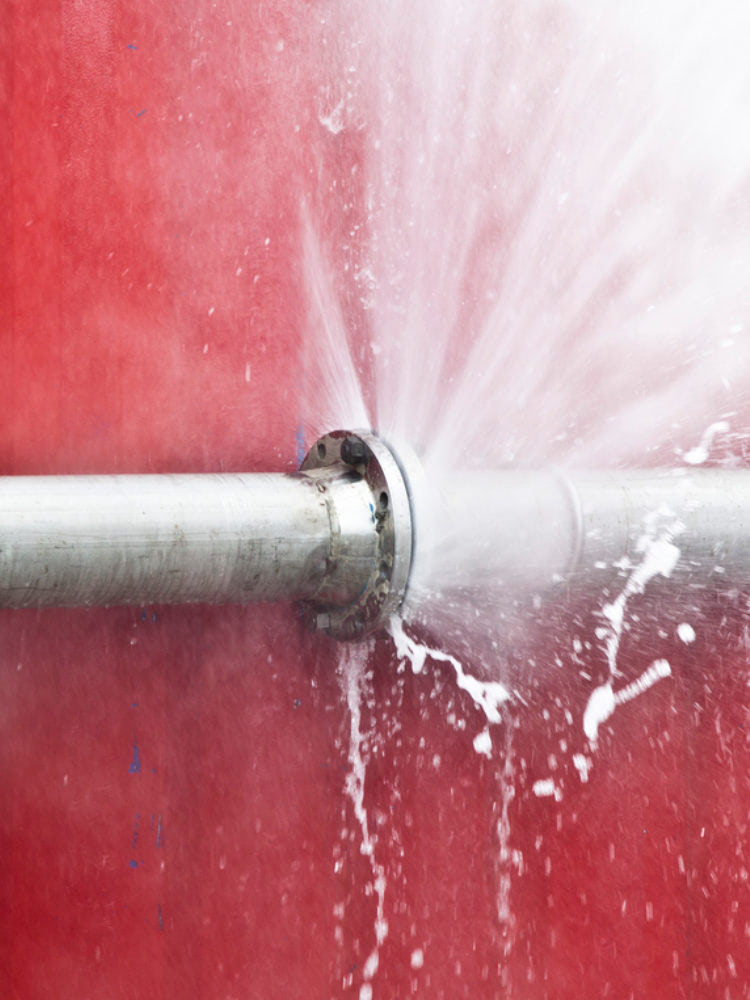Recognizing and Fixing the Six Most Common Water Leaks in Your Home
Recognizing and Fixing the Six Most Common Water Leaks in Your Home
Blog Article
The content listed below relating to How to Find Water Leaks is totally insightful. Check it out for your own benefit and see what you think of it.

Leaks not just trigger waste of water but can also create unneeded damage to your residence as well as promote undesirable organic growth. By understanding and also looking for day-to-day circumstances that create leakages, you can safeguard your home from future leakages and unneeded damage.
Instantaneous temperature changes.
Severe temperature adjustments in our pipelines can create them to expand as well as get suddenly. This development and contraction might create cracks in the pipes, specifically if the temperature level are below freezing.
Rusty water systems
As time goes by, your plumbing system ages and rust such as corrosion might start eating away the pipes. This might be the root cause of staining or warping on your water pipes. This requires an inspection with your plumber promptly. If our plumbing system is old, consider changing the pipes considering that they go to a higher danger of corrosion than the more recent versions.
Faulty Pipe Joints
The point at which your pipelines link is often the weakest web link in the waterline. Pipeline joints can degrade over time, resulting in water leaks. The bulk of pipe joints are not easily visible. If you have loud pipelines that make ticking or banging sounds, specifically when the warm water is activated, your pipeline joints are possibly under a great deal of stress. It is a good idea to have your plumber check your system yearly.
Encroaching roots
Most water leaks begin outside your house instead of inside it. If you discover a sudden decline in water stress, state in your tap, take some time to go out and analyze your lawn. You might notice damp patches or sinkholes in your backyard, and that might suggest that tree origins are invading water lines creating water to leak out. You can have your plumber check for intrusion, especially if you have trees or hedges near your residential or commercial property.
Poor Water Connectors
Sometimes, a leak can be brought on by loose hoses as well as pipes that provide your home appliances. Most of the time, changing is what triggers the loosened water Connections. You could find when it comes to a cleaning device, a tube may spring a leakage due to drinking during the spin cycle. In case of a water links leak, you might discover water running straight from the supply line or puddles around your home appliances.
Blocked Drains
Obstructed drains could be irritating as well as inconveniencing, but they can often wind up causing an overflow causing break pipes. Keep getting rid of any type of products that might go down your drains that can obstruct them to avoid such troubles.
All the above are sources of leakages but not all water leaks arise from plumbing leakages; some leakages might originate from roofing system leaks. All leakages ought to be repaired immediately to avoid water damage.
Leakages not only cause waste of water however can likewise trigger unnecessary damage to your house and promote unwanted natural development. By recognizing and also looking for day-to-day situations that trigger leakages, you can shield your residence from future leaks as well as unneeded damages. Today, we will certainly look at 6 leak causes that may be causing your pipes to trickle.
At times, a leakage can be created by loosened hoses and pipelines that provide your devices. In situation of a water links leakage, you might observe water running straight from the supply line or pools around your home appliances.
How To Check For Water Leak In Your Home
How To Check for Leaks
The average household's leaks can account for nearly 10,000 gallons of water wasted every year and ten percent of homes have leaks that waste 90 gallons or more per day. Common types of leaks found in the home are worn toilet flappers, dripping faucets, and other leaking valves. These types of leaks are often easy to fix, requiring only a few tools and hardware that can pay for themselves in water savings. Fixing easily corrected household water leaks can save homeowners about 10 percent on their water bills.
To check for leaks in your home, you first need to determine whether you're wasting water and then identify the source of the leak. Here are some tips for finding leaks:
Take a look at your water usage during a colder month, such as January or February. If a family of four exceeds 12,000 gallons per month, there are serious leaks.
Check your water meter before and after a two-hour period when no water is being used. If the meter changes at all, you probably have a leak.
Identify toilet leaks by placing a drop of food coloring in the toilet tank. If any color shows up in the bowl after 10 minutes, you have a leak. (Be sure to flush immediately after the experiment to avoid staining the tank.)
Examine faucet gaskets and pipe fittings for any water on the outside of the pipe to check for surface leaks.
Undetected water leaks can happen without the home or business owner even realizing. If you suspect a water leak, but not able to find the source. It is time to contact a professional water leak detection service, The Leak Doctor.
How To Find a Water Leak In Your Home
https://www.leakdoctor.com/blog/How-To-Check-For-Water-Leak-In-Your-Home_AE197.html

Do you enjoy more info about Common Water Leaks In House? Post a review below. We will be interested to find out your opinion about this post. In hopes that you come back again soon. Sharing is caring. One never knows, you could be doing someone a favor. I love reading our article about How to Find Water Leaks.
Click Here Report this page